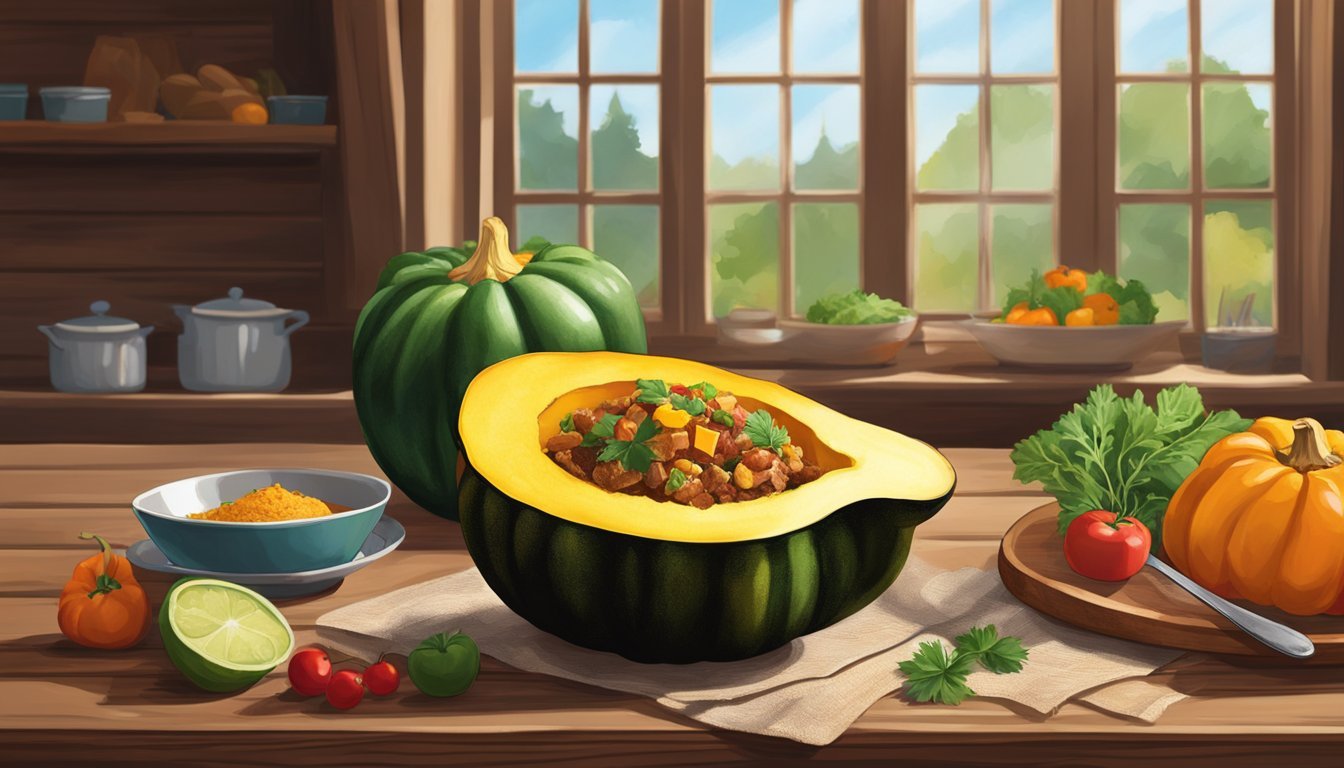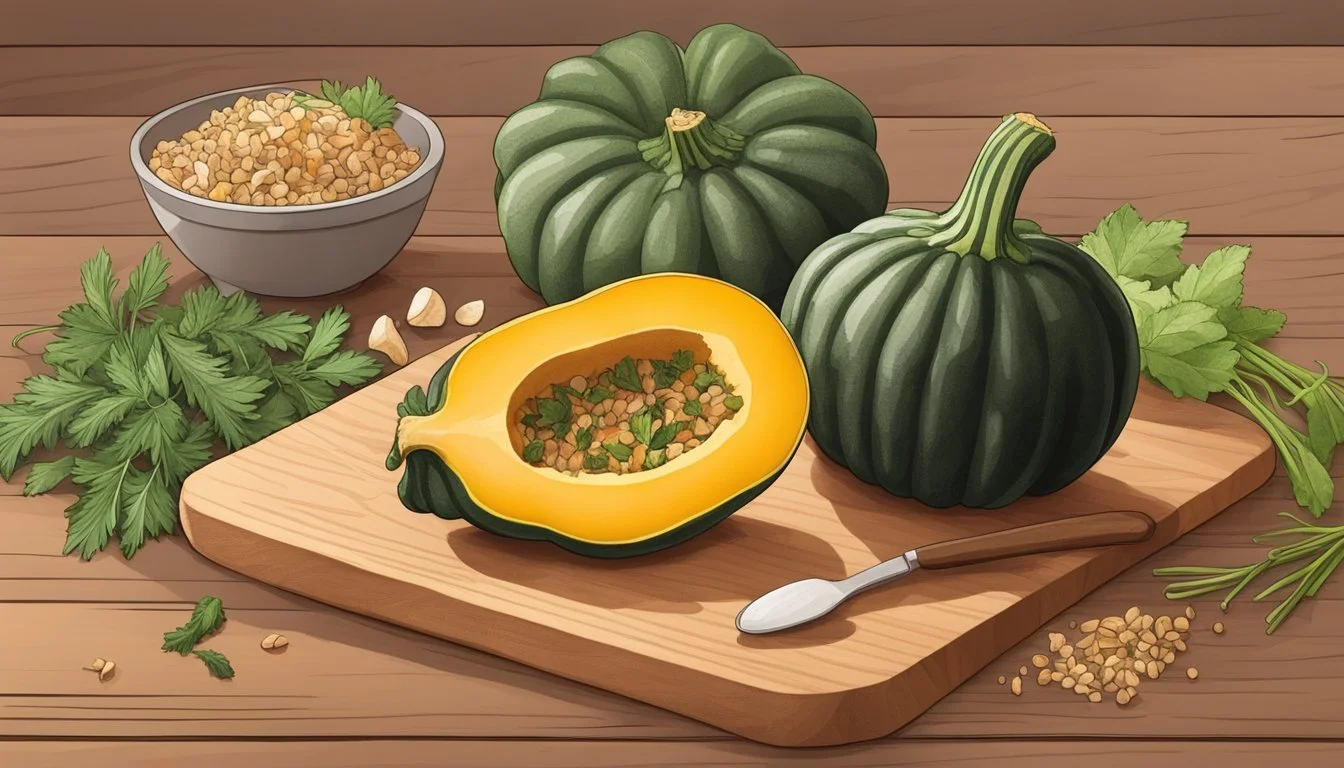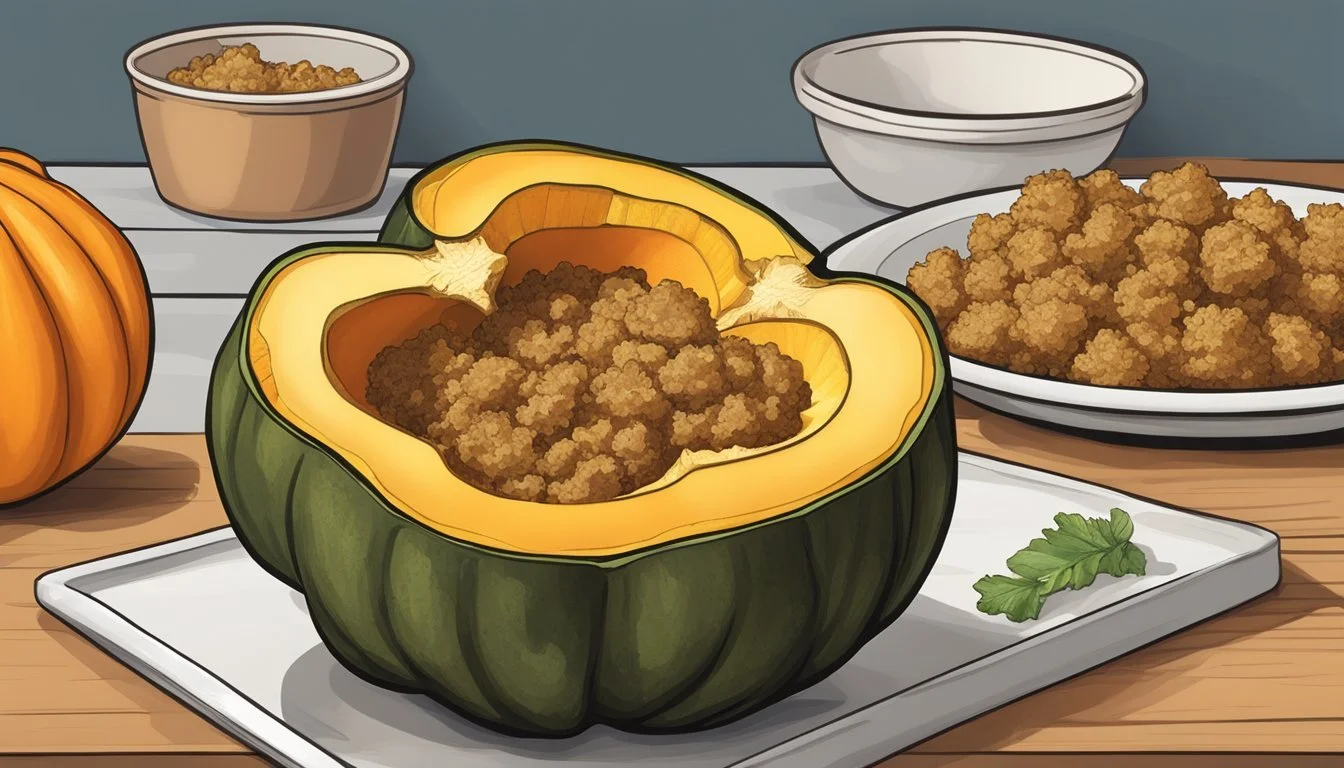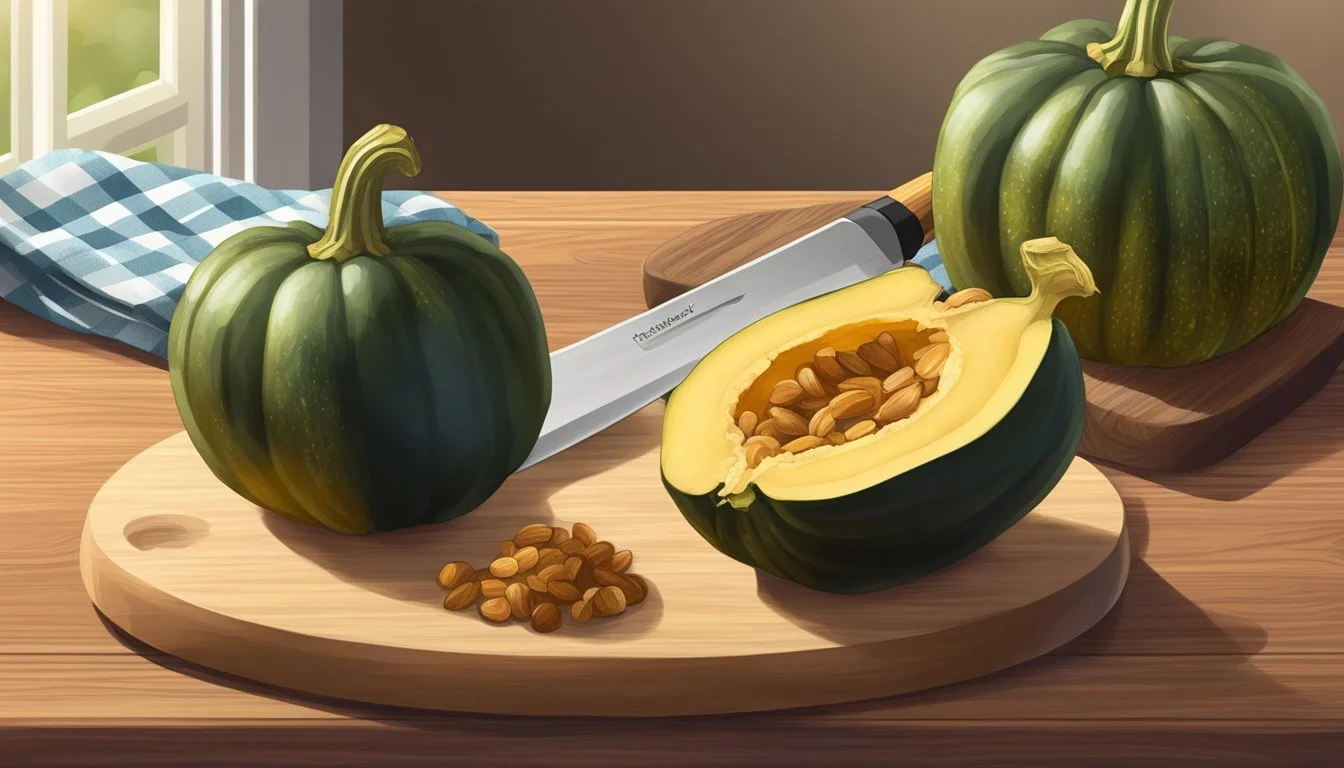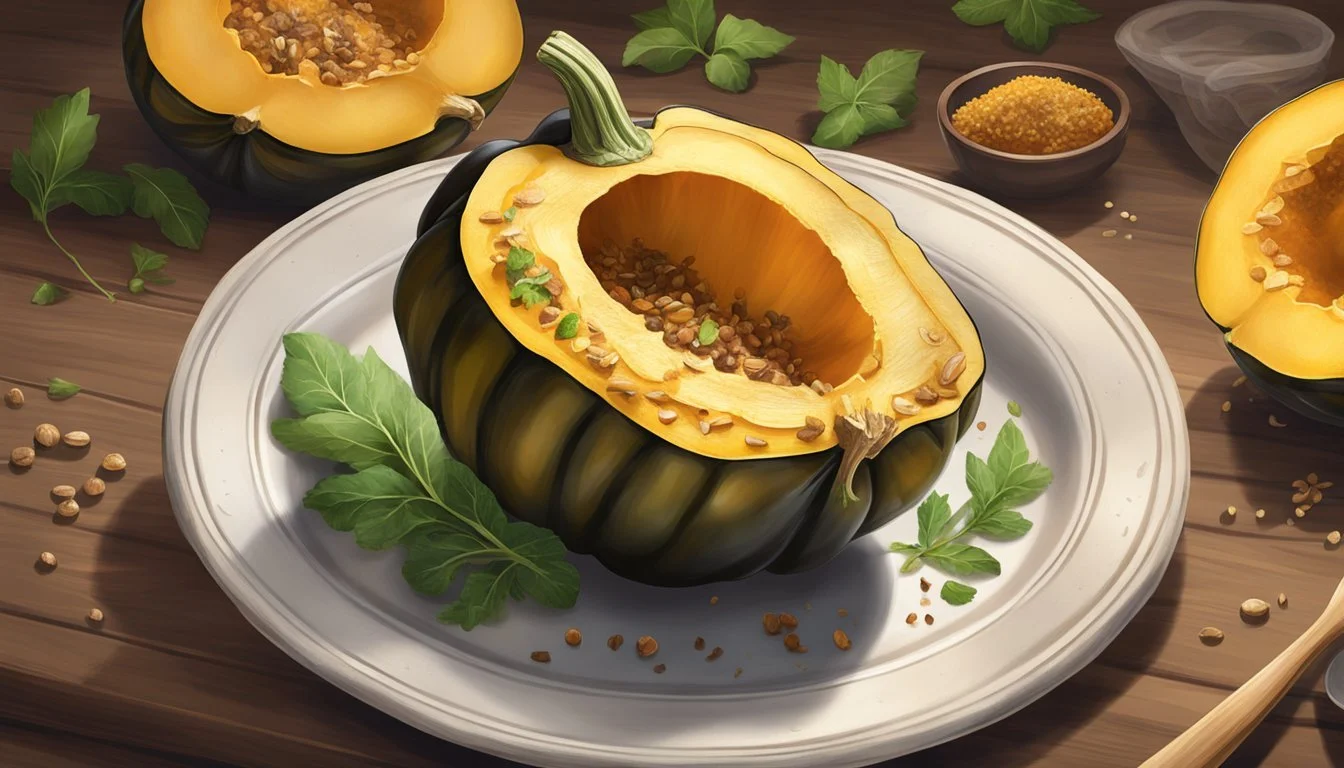How Long Does Gluten-Free Stuffed Acorn Squash Last?
Storage Tips and Guidelines
Many people love the warm, comforting flavors of gluten-free stuffed acorn squash. Whether enjoyed as a main course or a side dish, this delightful recipe can be prepared in advance and stored for later use. Gluten-free stuffed acorn squash can last in the refrigerator for about 3 to 5 days when stored in an airtight container. The moisture content and ingredients used in the stuffing, such as meats and vegetables, affect the shelf life, so it’s important to consume it within this timeframe to ensure freshness and safety.
For those who prefer to prepare meals in bulk or ahead of time, freezing is an excellent way to extend the lifespan of gluten-free stuffed acorn squash. Wrapped tightly in plastic wrap or aluminum foil and placed in a sealed freezer-safe container, it can last for up to 2 months. Before serving, allow it to thaw in the refrigerator overnight and reheat thoroughly to enjoy a delicious and nutritious meal.
Understanding the storage and shelf life of gluten-free stuffed acorn squash helps in meal planning and ensures that you can savor this dish without compromise. Proper storage techniques maintain its wholesome flavors and nutritional benefits, providing a convenient and tasty option for any mealtime.
Understanding Gluten-Free Diets
A gluten-free diet excludes gluten, a protein found in wheat, barley, and rye. This diet is essential for individuals with certain health conditions and can provide various benefits, but it also comes with its own set of challenges.
Benefits of a Gluten-Free Lifestyle
People with celiac disease must follow a gluten-free diet to prevent serious health issues. Eating gluten can cause an immune response that damages their small intestine lining, leading to nutritional deficiencies and other problems.
Those with non-celiac gluten sensitivity may experience digestive discomfort when consuming gluten. Removing gluten can alleviate symptoms such as bloating, diarrhea, and abdominal pain.
A gluten-free diet may also benefit individuals with wheat allergies, reducing allergic reactions that can range from mild to severe.
Challenges and Considerations
Maintaining a gluten-free diet can be challenging. Gluten is present in many common foods, and careful label reading is necessary to avoid it. Cross-contamination during food preparation, particularly in shared kitchen spaces, poses a risk.
Gluten-free products can be more expensive and less accessible than their gluten-containing counterparts. This can make adhering to the diet costly and inconvenient.
Nutritional balance is another concern. Gluten-free foods may lack essential nutrients like fiber, iron, and B vitamins. It's important for those on a gluten-free diet to find alternative sources of these nutrients to maintain a balanced diet.
What is Acorn Squash?
Acorn squash, a variety of winter squash, is known for its distinctive ribbed exterior and sweet, nutty flavor. The skin is typically dark green, though some varieties may have orange or yellow patches.
Acorn squash is rich in vitamins and minerals, making it a nutritious addition to any meal. It is a good source of vitamin A, potassium, and dietary fiber.
This squash is usually harvested in the fall and can often be found at local farmers markets alongside other varieties like butternut squash, spaghetti squash, and kabocha.
Typically, acorn squash is prepared by halving, removing the seeds, and roasting or baking. Its versatile nature makes it suitable for both sweet and savory dishes.
Gluten-Free Stuffed Acorn Squash Basics
Making gluten-free stuffed acorn squash requires attention to ingredient selection and precise preparation techniques to ensure a delicious and safe meal. The following sections break down each critical step in the process.
Selecting Ingredients for Stuffing
Choosing the right ingredients is crucial for a gluten-free stuffed acorn squash recipe. First, confirm all items are gluten-free, avoiding hidden sources of gluten. Common ingredients include wild rice, quinoa, cranberries, nuts, seeds, and a variety of vegetables like spinach and onions.
For protein, consider options like lentils or chickpeas for a vegetarian or vegan dish. Meat options such as ground turkey or sausage can also be used, ensuring they are gluten-free. Seasonings should be checked for gluten content, focusing on herbs, spices, and gluten-free soy sauce.
Preparation Techniques
Start by preheating the oven to the recommended temperature, often between 350°F and 400°F based on different recipes. Cut the acorn squash in half lengthwise and remove the seeds.
For even cooking, place the squash halves cut-side up on a baking sheet, drizzle with olive oil, and roast until tender, typically 30-40 minutes. For added moisture, a small amount of water can be added to the baking dish.
Meanwhile, prepare the filling by cooking grains like wild rice or quinoa and combining them with chopped vegetables, dried fruits, and seasonings. Stuff the roasted squash halves with the mixture and return to the oven for a brief period to meld the flavors.
Cooking Instructions
Making gluten-free stuffed acorn squash involves preparing the squash and then stuffing it with a flavorful filling. Each step requires careful timing and attention to detail to ensure a delicious and satisfying dish.
Steps for Preparing Acorn Squash
To begin, preheat the oven to 400°F.
Next, cut each acorn squash in half lengthwise. Scoop out the seeds and stringy bits with a spoon and discard them.
Place the squash halves cut-side up in a baking dish or on a baking sheet. Drizzle olive oil over each squash half and sprinkle with a pinch of kosher salt.
Bake the squash in the preheated oven for 20-30 minutes. The squash should be tender when pierced with a fork.
Remove from the oven and let them cool slightly before stuffing.
How to Stuff and Cook Acorn Squash
While the squash is baking, prepare the stuffing. This could include ingredients like wild rice with cranberries and pecans or a combination of sweet apples and savory sausage.
In a medium saucepan, cook your chosen stuffing ingredients according to the recipe's instructions.
Once the squash halves are done and slightly cooled, scoop the prepared stuffing into each squash half generously.
Return the stuffed squash halves to the oven, baking at 400°F for another 15-20 minutes, or until the stuffing is heated through and slightly crispy on top.
Serve warm, perhaps drizzled with a touch of maple syrup for added flavor.
Nutritional Information
Gluten-free stuffed acorn squash offers a nutritious and well-balanced meal option. Each serving typically consists of half an acorn squash filled with a variety of ingredients like quinoa, wild rice, cranberries, and others. The combination of these ingredients provides a range of essential nutrients.
A serving of gluten-free stuffed acorn squash contains approximately 267 calories.
For those monitoring their fat intake, there are about 11g of fat per serving, which includes both saturated and unsaturated fats.
Nutrient Breakdown:
Calories: 267 per serving
Fat: 11g
Carbohydrates: 35g
Fiber: 7g
Protein: 12.5g
The fiber content is quite impressive, with 7g per serving. This is beneficial for digestive health. The carbohydrate content contributes to the energy value of the dish while keeping it balanced.
Olive Oil Use:
Often, a drizzle of extra-virgin olive oil is added to the squash before roasting, enhancing its flavor and nutritional profile. This oil is rich in monounsaturated fats, which are heart-healthy.
When combined with nutrient-dense ingredients like quinoa and wild rice, the stuffed acorn squash becomes a meal that's not just delicious but also nourishing.
It’s an excellent option for individuals on a gluten-free diet, ensuring they receive a balanced intake of fiber, protein, and healthy fats.
Storage and Shelf Life
Proper storage of gluten-free stuffed acorn squash is crucial to maintain its freshness and flavor. Once prepared, it’s best to store the stuffed squash in an airtight container.
Refrigeration
To refrigerate, place the cooled stuffed acorn squash in a container and seal tightly.
Store in the refrigerator for up to 3-4 days.
Freezing
For longer storage, freezing is an option. Follow these steps:
Allow the squash to cool completely.
Wrap each half in plastic wrap or aluminum foil.
Place the wrapped halves in freezer-safe bags or containers.
When properly frozen, gluten-free stuffed acorn squash can last up to 3 months.
Tips for Reheating
Refrigerated: Reheat in the oven at 350°F for 15-20 minutes or until heated through.
Frozen: Thaw in the refrigerator overnight before reheating in the oven.
By following these storage tips, you can ensure that your gluten-free stuffed acorn squash remains tasty and safe to eat.
Enhancing Flavor and Texture
Herbs and spices play a vital role in elevating the flavor profile of gluten-free stuffed acorn squash. Sage, rosemary, and thyme are excellent choices that complement the squash's natural sweetness.
A hint of nutmeg can add a warm, earthy undertone.
Salt and pepper, specifically sea salt and freshly ground black pepper, are fundamental for seasoning.
A balanced seasoning enhances the overall taste without overpowering it.
Layers of flavor can also be achieved by incorporating other ingredients. For instance, a touch of sugar or a drizzle of honey can accentuate the squash's sweetness.
Textures are equally important. Including ingredients like nuts or seeds can add a delightful crunch.
Alternating between tender roasted squash and crispy toppings creates an interesting mouthfeel.
Olive oil brushed over the squash before roasting ensures a rich, caramelized exterior.
Lastly, the liquid used in the baking process, whether it is water or broth, can subtly influence the squash's texture, making it moist and tender.
All these elements combined help in achieving a dish that is not only flavor-packed but also visually appealing and texturally satisfying.
Gluten-Free Stuffing Variations
When making gluten-free stuffing, there are many variations to consider. Each offers a unique flavor and can cater to different dietary preferences.
Grain-Based Options
Quinoa: This is an excellent option for those looking for a protein-rich stuffing. It can be mixed with herbs, celery, and mushrooms to create a flavorful dish.
Rice: Brown rice or wild rice both make hearty bases. Brown rice brings a nutty flavor, while wild rice offers a slightly chewy texture.
Grain-Free Options
Vegetarian: Combining a mix of veggies such as mushrooms, spinach, and celery can create a flavorful stuffing without grains.
Vegan: Opt for a grain-free stuffing using a base of diced apples, dried cranberries, and nuts like walnuts or pecans.
Cheese Additions
Cheddar: Melted cheddar can be added for a creamy texture.
Parmesan: Grated parmesan cheese works well in adding a savory depth to the stuffing.
Sweet and Savory Combinations
Fruits: Apples and dried cranberries add a sweet note. They pair well with savory ingredients like mushrooms and onions.
Nuts and Seeds: Fennel seeds can introduce a unique flavor, complementing the sweetness of fruits and the earthiness of mushrooms and spinach.
Preparation Tips
Moisture Balance: If the stuffing seems too dry, adding a small amount of vegetable broth can help.
Herb Mix: Fresh herbs like thyme, sage, and rosemary can enhance the flavor profile.
These variations ensure there is a gluten-free stuffing suitable for every palate and dietary need. Experimenting with different combinations of these ingredients allows for delicious and diverse outcomes.
Additional Serving Suggestions
Gluten-free stuffed acorn squash can be enjoyed in various ways to enhance your meal. For a main course, it pairs wonderfully with lemon juice, which adds a refreshing citrus note.
For a heartier meal, consider serving it with a side of roasted butternut squash soup. This combination provides a delightful contrast in textures and flavors.
If you're hosting a Thanksgiving dinner, gluten-free stuffed acorn squash is perfect as a side dish. It complements traditional dishes like turkey and cranberry sauce, adding a festive variety to your table.
A simple and elegant way to serve it is on a slice of toast. The crunchy texture of the toast balances with the tender squash, making for a delicious and easy-to-eat presentation.
Broth options: For a savory twist, drizzle a bit of warmed vegetable broth or chicken broth over the top just before serving. This adds a depth of flavor and keeps the stuffing moist.
To accommodate different tastes, consider these serving options:
Star rating suggestion: If aiming for a higher star rating from guests, garnish the stuffed squash with fresh herbs like parsley or thyme.
Individual servings: Cut the squash into smaller portions to serve as appetizers at dinner parties.
Experiment with these suggestions to find the combination that best suits your meal and guests' preferences.
Health Considerations and Allergies
When making gluten-free stuffed acorn squash, it is important to consider health implications and potential allergies.
For those with celiac disease, even small amounts of gluten can cause significant harm to the small intestines. Thus, ensuring all ingredients are gluten-free is essential.
Individuals with gluten sensitivity may experience adverse reactions to gluten, such as headaches or digestive issues. Using certified gluten-free ingredients can help avoid these problems.
Wheat allergy sufferers need to avoid any cross-contamination with wheat products. Double-check all seasonings and stuffing components to confirm they are completely free of wheat derivatives.
Allergy-Friendly options should be explored for guests with multiple food allergies. Ingredients like nuts, shellfish, and dairy should be clearly identified and checked for potential allergens.
Key Tips for Allergy Management:
Label Ingredients: Clearly identify and label all ingredients used.
Avoid Cross-Contamination: Use separate utensils and cookware to avoid cross-contact with allergens.
Check Certifications: Look for allergen-free certifications on packaged foods.
Implementing these practices can create a safer and more inclusive dining experience for everyone.
Food Pairings and Complementary Dishes
Gluten-free stuffed acorn squash pairs wonderfully with various dishes, making it a versatile choice for fall and holiday meals, including Thanksgiving.
For a main course, consider pairing it with roasted chicken or turkey. The savory flavors of the poultry complement the mildly sweet and nutty profile of the acorn squash.
Sides like mashed potatoes or steamed green beans are excellent options. The creamy texture of mashed potatoes and the crispness of green beans provide a nice contrast to the tender squash stuffing.
Incorporating mushrooms into your stuffing can add an earthy depth. Mushrooms, sliced yellow onions, white onions, and minced garlic can be sautéed and mixed in for added flavor and texture.
A quinoa salad with cranberries and citrus dressing acts as a refreshing side that balances the hearty squash.
Including a cozy, nutritious soup like butternut squash or roasted tomato can enhance the meal’s warmth. These soups provide a flavor continuity while adding an additional level of comfort.
Friends and family around the table will appreciate artisan bread rolls or gluten-free cornbread. These can be used to mop up any remaining stuffing or juices.
Lastly, for a lighter option, a mixed greens salad with nuts, dried fruits, and a tangy vinaigrette can provide a bright, fresh counterpoint to the rich acorn squash.
Frequently Asked Questions
Q: How long does gluten-free stuffed acorn squash last in the refrigerator?
It lasts for 3-4 days when stored in an airtight container.
Q: Can you freeze gluten-free stuffed acorn squash?
Yes, it can be frozen. Wrap it tightly and store it for up to 2 months.
Q: How should you reheat gluten-free stuffed acorn squash?
Reheat in an oven at 350°F for 15-20 minutes or until warmed through. You can also use a microwave but it may alter the texture slightly.
Q: Can you make gluten-free stuffed acorn squash ahead of time?
Yes, prepare and assemble the dish up to a day in advance. Store in the fridge and bake just before serving.
Q: What are the signs that stuffed acorn squash has gone bad?
Look for mold, off smell, or a mushy texture. Dispose of it if any of these signs are present.
Q: Is gluten-free stuffed acorn squash suitable for meal prep?
Yes, it is an excellent meal prep option. Store individual portions in the refrigerator and reheat as needed.
Q: How should gluten-free stuffed acorn squash be stored?
Keep it in an airtight container in the refrigerator.
Q: Are there any common allergens in gluten-free stuffed acorn squash recipes?
Some recipes may include nuts, dairy, or soy. Always check the ingredient list.
Q: How long can stuffed acorn squash be left at room temperature?
It should not be left out for more than 2 hours to prevent the risk of foodborne illness.
Q: Can you eat the skin of acorn squash?
Yes, the skin is edible once cooked, though some people prefer to remove it.


